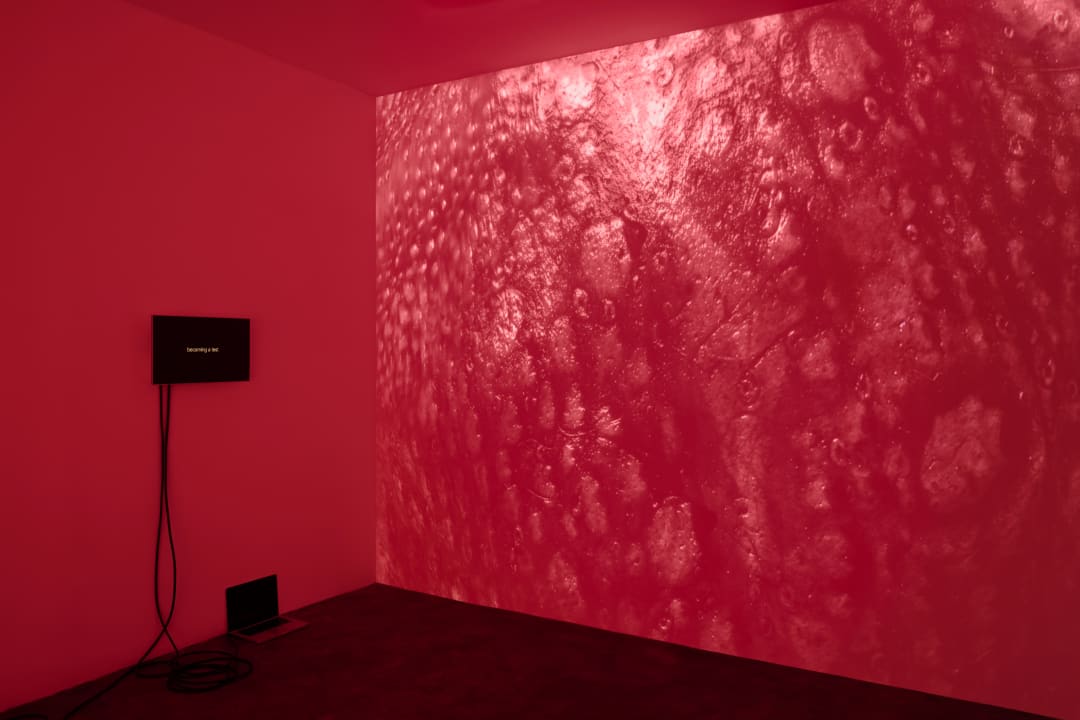Ours is a time of hybrids: of organism and machine, limb and tool, thought and code, intelligence, and processor. Those relationships that were alarming dichotomies that troubled our predecessors are now intrinsic ways of our operating. However, even when understanding and closely interacting with technological artifacts, a feeling of numbness is present in the back of our heads. It might not be fear persé, but the sensation is very similar.
Interested in investigating the possibilities of technology approaching the materiality of language, Pérez Villoro — in collaboration with computer engineer Nick Schumann — developed an artificial intelligence that recognizes the formal patterns of the alphabet and imagines new letters from that knowledge. The results are typographic characters transformed into ethereal mutant entities that leave vaporous traces of that which came before with each variation. Although this process is the foundation of his research, this exhibition is not limited to a mere typographical work. It is, rather, the origin of an exploration of the language of chimeras formed by humans and machines.
The exhibition can be understood as a living organism whose parts are possible to distinguish, but are also strange and mysterious. The remains of mining a space with letters that do not exist rest at the center of the room. They are sections that can combine into larger volumes. We perceive the exposed entrails of an undefined beast, which moves, throbs, and breathes. Its skin burns red and his moist breath becomes visible when condensed. Its voice says nothing, just imitates, with algorithms, the phonetic structure of human speech. The dragon that illustrated unknown territories in ancient cartography is now protecting us… or maybe it is surrounding us to hunt. The creature is a device, but also an animal — a chimera that points to the close relationship between vitality and mechanics. Cables are veins and thoughts are connections between circuits. Once our heartbeats synchronize in harmony with those of the beast, we can recognize ourselves in it, with it, and as part of it.
Pérez Villoro’s work achieves what seemed incredible: we can communicate with monsters through a new and specific language, though it is one that is not too far away from the one we already know. The hallucinated characters generate a space for exchange. Our letters are subjected to neural networks manufactured to allow communication between different types of intelligences and sensibilities, both artificial and natural —hallucinations that form words, that form verses, that form poems. And since machines can also be muses, Pérez Villoro uses this unusual language to make poetry for chimeras.
Paulina Ascencio

